Bolt Action Campaign D-Day British & Canadian Sectors
Warlord started the deep dive on D-Day with the campaign supplement of the same name - D-Day Overlord. But that is not all, the sectors receive more love, starting with the British & Canadian Sectors in this supplement and the US sectors in the next one, already released by the time this review went online.
Both, the British & Canadian and US D-Day sector books close the gap between the landing and the further actions around the Battle of the Bulge and Operation Market Garden. Because even after the successful landing in Normandy, the further operations were intense tasks, to bring in more troops, defeat counter attacks and fortify the bridgehead in Northern France.
With a smashing 192 pages, there is a lot of new content added to Bolt Action, but keeping the usual 20 GBP or 30 USD for the book, which is roughly 25 EUR. And if you've read a few of my other reviews on Bolt Action supplements, you'll probably know about the different covers. The final cover (right) and early cover (left) in the first row of pictures. We've often seen changes in the artwork between the first announcement and later publication, as they did here, going for a more dynamic pose for the Commonwealth soldiers. Along with re-naming the book form Anglo-Canadian Sector to British & Canadian Sectors. The pre-order customers along with some trade accounts have access to a special miniature that was released along with this book, CSM Stanley Hollis, the only one being awarded on D-Day with the Victoria Cross (an award for valour "in the presence of the enemy").
Author of this book is Mark Barber, who already wrote a few supplements for Bolt Action, among them Battle of the Bulge, Battle of France and New Guinea.
What is it about?
This book puts the focus on the days after the D-Day and the push forward into France and Western Europe from the Commonwealth beaches of Gold, Sword and Juno. You need understand that D-Day just marks the initial landing on June 6th, but Operation Overlord is the whole Battle of Normandy. And this covers the time frame of the action from June to August 1944, and in case of this book the missions in / from the British and Canadian Sectors. Beginning with the direct actions after the landing on said beaches above and the continuing operations all over Northern France by the British, Commonwealth and directly Allied forces acting from exile like the Polish or Czechoslovakian. As D-Day provided a beachhead in France and access to the European mainland, it was important to secure it and push further into (North) Western Europe, liberate occupied cities and create a two-front situation for the Axis, as the Red Army was starting Operation Bagration (Covered in Road to Berlin supplement) in June 1944 as well.
It was assumed that the German army in France would be turmoil and therefore easier to push back, but in some cases and areas they fought very fierce and prolonged the operations, longer than expected. This created the need for a variety of operations to weaken the enemy, target supply lines and make it harder for them to re-organise. One of these major operations was the Battle for Caen, along with the preparation to do so like Operation Epsom, Operation Windsor (to secure an airfield for allied supply in Normandy) and following offensives to secure the city over the duration of about 2 months. All these are covered with matching scenarios, units and theatre selectors in this book. The liberation of Caen gave the Allied forces the ability to entrap parts of the German Army (Heeresgruppe B, 7th Army and the Fifth Panzer Army) acting in Northern France, in what is called the Falaise Pocket, which is covered in here as well. The success of these missions was crucial for the further liberation of France and the advance of the Allied forces into Germany and occupied Belgium and Netherlands, but these operations are covered in other supplements like Battle of the Bulge and Operation Market Garden.
First Impression
This is a heavy book. As D-Day: Overlord itself is already 216 pages, I wasn't expecting the following up book (which is split in two, separating the US sectors from the Anglo-Canadian sectors to have more room to go into detail) to have such depth / range. I don't really need to go into detail on the quality of these books. They are properly designed. You have a clean layout, lots of well-made illustrations (supplied by Osprey), scenic pictures of miniatures in combat (where the quality of these has noticeably improved over time) and a good structure. Yet, as great as it is, that it provides such depth, it a bit much at first.
But they use these pages wisely. It is very dominant on the British / Commonwealth, making sure to differentiate the forces from a "regular" or generic army list from the old Armies of Great Britain (this book is almost 10 years old). Not only providing more character and uniqueness to the Canadians, but adding other themed armies like the British and Inter-Allied commandos. And not just as a side note, but properly described and quite detailed army lists.
As such, we are introduced to quite a lot of Legends of Bolt Action. Unfortunately, not as a chapter of their own, but again spread all over the book (which even makes sense in this case, as they belong to certain armies and as such the proximity next to their theatres selectors is beneficial). There are the Canadians Lieutenant Colonel Lockhart Ross Fulton, Major Sydney Valpy Radley-Walters (who is only named and his rules can be found in Tank Wars), Major David Currie, Corporal Frederik Topham, the British Ltn Col Peter Young, Brigadier Simon Fraser (15th Lord Lovat, only named and his rules are already covered in D-Day Operation Overlord), Royal Marine Cpt Patrick Kay, Free French Force Capitaine de Corvette Philippe Kieffer. And of course, they are fighting against someone, there are still Germans covered in this book, The Black Baron himself, Michael Wittmann, and Kurt "Panzer" Meyer.
This is quite a lot of characters for a Bolt Action supplement, but they are not the main part of new gaming material. The focus is on the new units - at least for Commonwealth forces. As the Germans get "Heldenklau" Squad, if you exclude those listed in the selectors. The British and Canadians are luckier. There are a lot of Armoured Cars, even covering an Armoured Car Support/Assault Section, but we now have Humber LRC, Fox AC, Lynx Scout Car, smaller tracked vehicles like the M29 Weasel and Wasp IIC, as well as the C15TA as armoured truck and ambulance. The Royal Engineer Section with access to stubborn, tank hunters and flame thrower will find its fans, similar to a very themed fitting M4A4 Sherman V with Flail for mine clearing. The Canadians get more precise entries for their modified vehicles, like the finer options for Kangaroo, Sexton and Staghound, along with armoured cars like the Otter LRC. There is a new "class" of vehicles added as well, the armoured operation post vehicles, for both sides. Covering in this case variants of the Cromwell, Otter, Sherman and Ram for the Anglo-Canadians, and the Beobachtungswagen of the German forces, like Sd.Kfz. 250/5, 38H(f), Artillerie-Panzerbeobachtungswagen III and IV J. We see a return of the army chaplains, who were covered in other supplements already (like Battle of the Bulge and New Guinea), and Intelligence Officers, providing intel on troop movements and as such affecting the die pulled from the bag.
Most interesting are probably the vast amount of new theatre selectors, giving you access to the fitting lists for the different operations - who differ in very noticeable ways. The British have their Late War selectors for Anti-Tank Reinforced Platoons, Mortar Reinforced Platoons, MG Reinforced Platoons, Artillery Gun Troop Reinforced Platoons, British / Canadian Self-propelled Artillery Platoons of 1944-45. And the rules even cover Late War Armoured Divisions of NW Europe (incl. 7th Armoured Division Desert Rats, 11th Black Bull, Guards AD "All Seeing Eye", 1st Polish AD, 1st CZ Armoured Brigade) along with their special rules for armoured platoons, air superiority and divisional characteristics. And of course, the RAF in Normandy and their armoured car squadrons. As most of the "relevant" German lists are covered in Operation Overlord, in this book you only get two for them - the static division remnants (fight 'til you die / hold your position at any cost) and the Panzer-Lehr Normandy 1944 Division Reinforced Platoon.
There are few minor new unit special rules, fitting their units purpose on the table (like Behind Enemy Lines ignoring the -1 modifier for coming onto the table). Beyond that we receive written out rules for dug in, minefields and fortifications. Rules we've seen in other supplements as well.
Probably one of the most interesting part of the book are the two themed army lists of British and Inter-Allied Commandos and the full Canadian Army list. The Commandos cover the pre-D-Day rules for early raids along fitting theatre selectors. And the Canadians see a lot of love with their own special national army rules (Dogged -> Access to Stubborn, Hates the SS -> count as Fanatics against SS Units), in fact in such a detailed way, that you probably just would need the rulebook and this supplement to play them. And they have another batch of theatre selectors, for the time frame of 1939 to 422 and the several late war Infantry Divisions, Reinforced Divisions, Airborne and even Armoured Division. And after all that, along the last pages of the book, there are still a few pages adding the 12th SS Hitlerjugend and Luftwaffe Field Division to the themed selectors. It should be noted, that the SS Hitlerjugend were not child soldiers like in the Volkssturm, but young men age 17-18, recruited from the Hitlerjugend and under command of seasoned veterans from the 1st SS Leibstandarte Adolf Hitler. Their suicidal fanaticism and angriff! special rules make them a bit uncontrollable and very aggressive.
A total of 13 scenarios is covered in British and Canadian Sectors, split into small chapters and listed in chronological order.
- Scenario 1: Riva Bella - Fighting in Coastal Villages (D-Day Pushing Inland)
- Scenario 2: La Bruyere Woods (D-Day Pushing Inland)
- Scenario 3: Villers-Bocage (Villers-Bocage and the Race for Caen)
- Scenario 4: Battle of Douvres Radar Station (Tactical Objectives Inland)
- Scenario 5: V Weapon Raid (Tactical Objectives Inland)
- Scenario 6: Operation Epsom (Renewing the Assault on Caen)
- Scenario 7: Operation Windsor (Renewing the Assault on Caen)
- Scenario 8: Operation Charnwood - The Outskirts of Caen (Bloody Caen - Carpet Bombing and Street Fighting)
- Scenario 9: Operation Jupiter - The Second Attack on Hill 12 (Bloody Caen - Carpet Bombing and Street Fighting)
- Scenario 10: Operation Goodwood/Atlantic (The Great Offensive)
- Scenario 11: Operation Totalize (The Canadian Offensive)
- Scenario 12: The Death of the Black Baron (The Canadian Offensive)
- Scenario 13: Operation Tractable ("Breaking Out")
How does D-Day British & Canadian Sectors play?
You get a broad variety of different scenarios from this book. Even a few games made for armoured divisions. Different types of armies, different types of mission objectives and a good cross section of terrain, from ruined cities, to fortified outposts and even airfields. The Allied forces are usually the acting party, as the German player will mostly be on retreat or defending their last stand, but that's mixed from strategic points, important supply chains and so on.
And the forces you will play - if you stay with the recommendation from the scenarios - are very different as well. From a Commando platoon attacking a radar station (very similar to the Band of Brothers scene), over armoured car skirmishes to tank battles pushing forward, there is a lot do. Especially if you have larger armies.
What's next?
As this review is unfortunately a bit delayed a lot of the following campaign supplements are already released. The D-Day: US Sector is very similar to this one, covering the Battle of Normandy, but obviously setting the focus on the US American forces and the beaches Omaha and Utah, as well as the following operations aiming at Carentan, Cherbourg or Sainte-Mère-Église. Warlord Games kept the focus on Europe as a theatre of war and released the first book of the Italian campaign, Soft Underbelly as well. Starting with Operation Husky in July 1943 until the end of the year. There are rumours about a follow up book, covering the tough gut in additional to the soft underbelly. We're waiting for confirmation.
The same goes for the Bolt Action Raiders supplement, that was rumoured for the end of 2021 already and then postponed. It's about commando or smaller military operations, like sabotaging hydroelectric plants in Norway and assassination attempts against Rommel in North Africa, to the defense of Pavlov's House at Stalingrad and covert landings in the Pacific and Normandy. It will be based on the classic Bolt Action system, but go more into detail, providing everything needed to recreate these critical operations. As such the book is said to cover scenarios, rules for both special forces and regular troops, and a new campaign system that adds a narrative element to games.
Conclusion
It is a lot. This book gives a lot of new content to the game. Maybe a bit to detailed in some cases. But I assume, if you're the audience, you're happy that they are getting it right. Target audience actually the only thing I would really criticize on this book. Whereas the others usually cover the participating factions one a roughly balanced level, this is very one sided towards the Commonwealth. If you play late war British, go for it, especially if you field on the themed lists. For Canadians this is a must have. But for everybody else? As a collector, yeah, probably, it is fairly priced and well made. But from the point of view of a German player? If you don't play one of the two lists named above, this isn't really necessary. I assume this will be the case with the US sectors supplement as well. So, if you only have Germans, you're probably good to go with the D-Day Overlord list and / or using the late war selectors from the army book.
If you are new to the game and don't have that many supplements, these scenarios will provide new content. Especially in alteration to D-Day and Market Garden for your British or Commonwealth Forces. Yet, these two already give you almost 50 different scenarios to play with, so it is really the question about your approach on detail if you want to break that down and have a closer / better representation of the Battle of Normandy.
For further information on the conflict, Osprey has a few publications in their campaign (CAM) range, like CAM 143 - Caen 1944, which covers Operation Epsom, Charnwood and Goodwood, as well as CAM 294 - Operation Totalize, covering the operations after Caen.
Bolt Action is a brand of Warlord Games.
The reviewed product item was provided by the manufacturer.

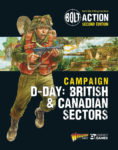
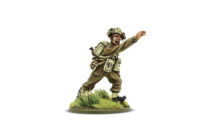
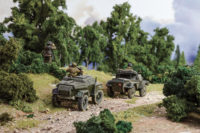
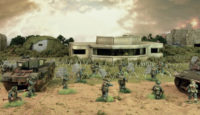
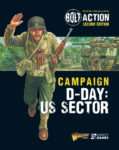
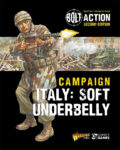












Leave a Reply